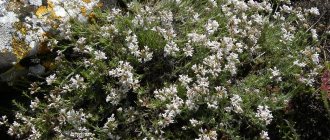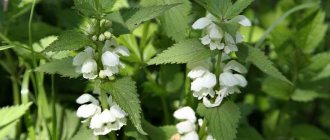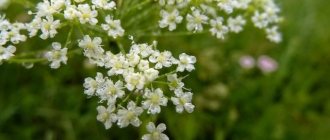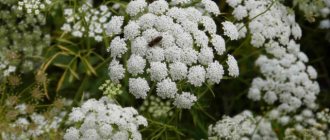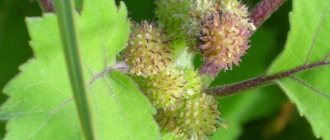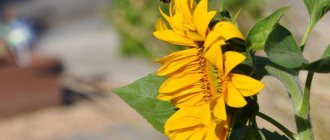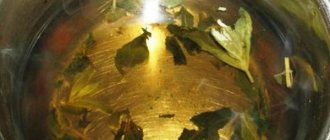A little history
For the first time, Yuba Ephorbus, a doctor who served at the court of the Moorish king, became interested in the healing properties of individual plants belonging to the genus Euphorbia. As for the scientific name of a particular species, there was a confusing story. Initially, the description of the plant was carried out by the German botanist Fedor Fischer. But out of absent-mindedness, he assigned it the name of an already existing species. Subsequently, this oversight was noticed by another botanist, Nikolai Turchaninov. He specialized in species taxonomy and wanted to correct the mistake by giving the plant the name of Fischer himself, but through an oversight he wrote it down as Pallas's Euphorbia.
This perennial was once considered a good remedy for constipation. Its juice was used to get rid of birthmarks, warts and calluses. Mongolian and Chinese healers have long used muzhika root. The use and beneficial properties, photos and history of this plant have been studied so well that it is still recommended today for enhancing sexual desire, maintaining an erection and treating sexually transmitted diseases.
Short description
Euphorbia Pallas (or Fischer) is a herbaceous plant with a well-developed root system and a long, strong stem. Its height can reach forty centimeters. On a simple, well-haired stem there are wide opposite leaves. Moreover, at the bottom they are scale-like, and at the top they are lily-like.
The man's root, the use and beneficial properties of which were known to our distant ancestors, blooms in May. Its fruit looks like a large flattened box with three brownish nutty seeds. All parts of the plant secrete abundant milky sap.
Characteristic
Euphorbia Pallas is a rather rare plant that can be found in China, Mongolia, Transbaikalia and Eastern Siberia. It mainly grows on gravelly and rocky slopes , less often in flat steppes.
Euphorbia man-root is a perennial plant reaching 40 centimeters in length . It has a long, strong, meter-long root. Its pubescent (sometimes bare) stems grow up to 20-50 centimeters and have an upper internode 2-6 centimeters long.
In the lower part of the milkweed there are brown scale-like leaves, in the middle there are lily-like, brownish-green leaves, collected in whorls of 2-6 pieces. The yellow flowers of Fischer's milkweed are collected in a large umbrella inflorescence.
The muzhik-root fruit looks like a flattened, thick-walled capsule with three light brown seeds. All parts of the plant are capable of secreting milky sap.
Euphorbia has a huge number of species, the following are very popular in home cultivation: Multi-flowered, Bordered, Cypress, Tirukalli, Ribbed, Mila, White-leafed, Triangular.
Collection of raw materials
As a rule, the root of Euphorbia Pallas is used in medicine. They begin to harvest it immediately after the above-ground part of the plant wilts. This usually happens no earlier than July.
Since the milky juice of the grass is poisonous, its collection is carried out using gloves made of fairly dense material and special safety glasses. The root is removed by hand, trying to dig it out along with the lateral shoots. The extracted raw materials are cleaned of soil residues, washed and left to dry in the sun. After some time, the peeling brownish bark is removed from the roots, cut into large pieces and laid out at some distance from each other. Dry them in the open air, remembering to turn them over periodically. Otherwise, the raw materials will begin to rot and acquire an unpleasant musty smell.
Collection and procurement rules
Despite the fact that the plant is listed in the Red Book, it often grows like an ordinary weed. Therefore, preparing a healing potion is not difficult at all. Euphorbia Pallas is poisonous, and this must be taken into account during collection!
- For medicinal purposes, only the underground part of the medicinal herb is used. You need to dig it up after the leaves begin to fade. Most often this happens at the end of August, sometimes at the beginning of September.
- During collection, protect your skin from getting juice on your skin. Otherwise, there will be a severe burn. Wear trousers, a long-sleeved shirt, and protect your hands and wrists with rubber gloves.
- Also dangerous are the vapors of the plant, which can enter the respiratory system and the mucous membranes of the eyes. Therefore, when collecting, use safety glasses and a gauze bandage.
- As stated above, the root is very powerful, so start digging away from the stem. Try not to damage it, as all branches of the root system have healing powers.
- Before sending the root for drying, clean it from the soil and rinse it under running water. And then place it in a sunny place to dry. Once the brown bark begins to peel off, drying comes to an end. Clean the bark thoroughly. Cut the root itself into pieces and air dry, but in a shady place, turning it over periodically.
Chemical composition
This aspect is still considered poorly understood. Man root, the use and beneficial properties of which are due to the high content of nutrients, is rich in selenium, essential oils, myricin, sucrose and fatty acids. It contains quite a lot of alkaloids, toxins, flavonoids, tannins and bitter extractives.
The roots of Euphorbia Pallas contain 8% resins. And the fresh milky sap of the plant contains from 53 to 79% moisture and water-soluble substances. In addition, it contains eufuron, tirucallol and euphorbic acid anhydride.
Euphorbia Pallas contraindications
Like every medicine, preparations with Fischer's Euphorbia root have contraindications. The main ones are pregnancy, breastfeeding, tachycardia and increased excitability.
Negative consequences in the form of intestinal and digestive disorders, nausea and vomiting can be caused by an excessive dosage. Independently harvesting a plant with poisonous milky juice often leads to skin burns and allergic reactions.
Individual intolerance to the substances contained in the root can lead to very serious consequences. Therefore, therapeutic measures can be taken only after consultation with a specialist.
While taking milkweed products on an empty stomach, some people may experience nausea or vomiting. In this case, you need to take them an hour and a half after eating.
Man-root: medicinal properties and contraindications
For men, this plant is useful because it contains a high concentration of phytoandrogens and phytoexysteroids. The active action of these substances helps to quickly get rid of many diseases of the reproductive system. But at the same time, it should be used with caution by those who suffer from allergies.
Euphorbia Pallas has antitumor, restorative, laxative, bactericidal and tonic properties. Thanks to its unique composition, it is able to actively suppress inflammatory processes occurring in the human body.
Description of the plant
Pallas's spurge (Euphorbia fischeriana), also known as man-root and Fischer's spurge, Transbaikal ginseng.
The plant is not used in official medicine, as it is considered poisonous. But it is actively used in alternative medicine, especially among those who adhere to naturopathic views.
According to adherents of this movement, spurge stimulates the immune system, kills bacteria and viruses, relieves inflammation and slows down the development of tumors. All these effects are due to the botanical description of the plant itself.
The variety is difficult to confuse with its relatives from the Euphorbiaceae family:
- its stem reaches a height of 30-40 cm, it is dense, and with any microtrauma, caustic, poisonous juice begins to be released from the pulp;
- the leaves are narrowed; in a healthy male root they are also full of liquid;
- the inflorescence appears at the very top of the milkweed; in the spring, Transbaikal ginseng produces miniature yellow flowers that disappear quite quickly;
- after flowering, fruits that are no less dangerous than the green part of the plants are formed (they look like a box with three spherical seeds with a smooth surface).
But the main feature of Pallas is the root. If you dig it out of the ground, you can easily see the figure of a man in it. That is why people call the grass man or man-root.
When the rhizome is cut, white juice will appear. It is highly pungent, so it should be used with caution for dermatological problems or particularly sensitive skin.
There are risks of complications from juice getting on the mucous membranes, especially in the eyes, mouth, and tongue. To avoid adverse reactions, you need to know the rules for collecting, preparing and further using Transbaikal ginseng.
Indications for use
Adherents of alternative medicine have been successfully using this herb (man root) for a long time. The use and beneficial properties of the plant, according to them, make it possible to quite effectively combat malignant tumors, gastritis, stomach ulcers, diseases of the bladder and kidneys. Preparations made from this perennial are indicated for phlegmon, boils, abscesses, purulent wounds and burns. The herb, endowed with strong laxative properties, is used to cleanse the intestines of toxins accumulated in it.
In folk medicine, Fischer's spurge has been used since ancient times to treat prostate adenoma, erectile dysfunction, testicular damage and chronic prostatitis. Preparations made from this plant are indicated for anemia. They are often prescribed to people who have undergone chemotherapy to restore blood flow. The herb prevents the growth of metastases and helps with leukemia.
Man root, whose medicinal properties are due to its unique chemical composition, is effective against bronchitis, tuberculosis, asthma and pneumonia. It is used to combat various gynecological diseases, including cysts, fibroids and infertility caused by inflammatory processes. Mongolian healers use this amazing plant to treat liver echinococcosis and eczema. Herbalists use Euphorbia Pallas to reduce birthmarks, warts and calluses.
What does the root cure?
It acts as a powerful immune stimulant, so it can be used for almost any purpose and be effective everywhere. The man root, or Euphorbia Pallas, exhibits excellent medicinal properties in the treatment of any male sexual problems, including sexually transmitted diseases, various tumors, including malignant ones, prostatitis, all kinds of testicular lesions, prostate adenoma, strengthens and prolongs male viability. Helps women with mastopathy, cysts, inflammatory infertility and uterine fibroids.
The benefits of such a miracle as Pallas's spurge do not end there. Its use is also effective for the treatment of skin diseases. To do this, the roots are dried, ground and used as a powder. It has an antifungal effect, disinfects, and stimulates tissue restoration. They treat scabies, ulcers, fistulas, boils, burns, abscesses and even toothache. Expulsion will help get rid of warts, calluses and age spots.
Man root is an excellent blood purifier, promotes hematopoiesis, and is an ideal assistant for leukemia and anemia. Euphorbia Pallas exhibits medicinal properties in treating the bladder and kidneys, normalizes metabolism, and is used as a tonic and restorative. Its use is indicated for problems with the respiratory organs (bronchitis, bronchial asthma, tuberculosis, pneumonia). Effective for dysentery, gastritis and stomach ulcers, it has an emetic and pronounced laxative effect. An infusion of the root is used for scarlet fever, malaria, whooping cough, endometritis and epilepsy.
Herbalists recommend using euphorbia as a drug with anticoagulant properties for the prevention of heart attacks, thrombophlebitis, strokes with sepsis and other blood-related diseases.
Side effects and overdose
It should be noted that man root (application and beneficial properties, reviews and photos - all this information is presented in this publication) is a very poisonous plant. Its milky juice contains a large amount of euphorbic acid anhydride. The first sign of Fischer's milkweed poisoning is considered to be vomiting, accompanied by debilitating diarrhea, swelling of the tongue and a burning sensation in the mouth. The patient also experiences stomach pain, cramps, a sharp decrease in blood pressure, arrhythmia and heart failure. In especially severe cases, poisoning with this plant is fatal.
Overdose and long-term use of Pallas's milkweed can lead to skin ulceration and chemical burns. Juice that gets into the eyes can cause blindness. Male root should not be used for tachycardia, increased excitability, as well as during pregnancy and lactation. Allergy sufferers should use this plant with extreme caution, strictly following the dosage recommended by the doctor.
Application in medicine
Methods of treating diseases
Euphorbia pallasa (man root) has gained immense popularity among traditional healers due to its medicinal properties. There are several methods for treating various diseases:
A decoction of the plant is used for diseases of the respiratory system.
With the help of milkweed, chronic bronchitis and tuberculosis of the lymph nodes can be cured.
Also, a decoction of muzhik root helps to cope with inflammatory processes in the mouth, rectum and nasopharynx.
Due to the presence of selenium, extracts from milkweed help fight anemia , and also restore blood composition after antitumor therapies: radiation and chemotherapy.
The upper part of the root is used as an emetic, and the lower part as a remedy for constipation.
Another property of milkweed is the treatment of urolithiasis;
An alcoholic tincture of Euphorbia pallas (man root) is used for diseases that can weaken the erectile function of the body in men. Such diseases include prostate adenoma and prostatitis.
Also, alcohol tincture helps strengthen the immune system. Euphorbia Pallas is recommended to be used for disorders of the gastrointestinal tract, and some say that the plant helps to lose excess weight.
This is one of the few plants that can stop the growth of metastases .
Among other properties of the muzhik root is the ability to overcome mastopathy and uterine fibroids.
It is important to remember that Euphorbia Pallas is a poisonous plant , so it is necessary to follow the correct dosage so as not to harm the body;
Euphorbia pallas root is used externally . Rubbing from a concentrated decoction is used to cure neurodermatitis and skin tuberculosis.
The milky juice of milkweed destroys warts.
In the presence of boils, abscesses, ulcers and festering wounds, use the powdered root.
Side effects
Due to the fact that it contains euborphine, milkweed (the root) is a poisonous plant, the improper use of which can lead to serious consequences.
When poisoned with Euphorbia Pallas profuse vomiting and diarrhea , the tongue may swell and a burning sensation in the mouth may appear, stomach pain appears and the mucous membranes become inflamed.
If the necessary measures are not taken in time, convulsions, loss of consciousness begin to appear, and the functioning of the heart is also disrupted. Milkweed poisoning can even lead to death.
In case of poisoning with milkweed, you must urgently call an ambulance , before which you need to lavage the stomach with a suspension of activated carbon in a 2% solution of sodium bicarbonate.
The patient should drink large amounts of cold milk and slimy drinks (for example, jelly).
Improper external use can lead to ulcers on the body and chemical burns.
If milky juice gets into the eyes, it can cause visual impairment or even complete blindness.
Methods of application
The man-root, the benefits and harms of which were known in ancient times, is actively used in folk medicine. All kinds of decoctions, tinctures and powders are made from it.
To prepare one of these folk remedies, take five grams of crushed root and pour half a liter of boiling water over it. All this is wrapped well and left for half an hour. After thirty minutes, the product is filtered through several layers of gauze and taken a tablespoon two to four times a day. This tincture effectively copes with cysts, mastopathy, fibroids, prostatitis and impotence.
To strengthen the immune system, stimulate hematopoiesis and activate the body's defenses, powder prepared from milkweed root is often used. It is taken 0.03 grams three times a day, half an hour before meals. The powder is also sprinkled on purulent wounds, burns and abscesses.
To combat stomach ulcers, tuberculosis, epilepsy, anemia, bronchial asthma, bladder and kidney diseases, use a decoction prepared from five grams of crushed Fischer's milkweed root. It is filled with half a liter of filtered water and placed on the stove. The broth is boiled for fifteen minutes, infused for two hours and filtered through cheesecloth. Take the remedy three times a day, a full tablespoon before meals.
To increase immunity and prevent various diseases, it is recommended to use alcohol tincture. To do this, take ten grams of the root and grind it. The resulting powder is poured with half a liter of 70% alcohol and put in a dark place. Infuse the product for a week, shaking it periodically. Take 8-10 drops three times a day, half an hour before meals.
Root man: application, reviews
People who have actually used this perennial talk about the high effectiveness of this product. According to them, with the help of preparations made from Fischer's milkweed, you can get rid of many health problems. It has an excellent wound healing effect and helps strengthen the immune system.
Man root is also often used to treat sexually transmitted diseases. Use for men is due to the fact that this plant contains substances that affect potency.
Also, everyone who has used this plant recommends taking precautions and remembering what to do in case of poisoning. The first thing to do in case of an overdose is to call emergency help. Before doctors arrive, you can do a gastric lavage with a 2% soda solution and drink cold milk, flaxseed suspension or jelly.
Medicinal properties
This plant contains many useful substances. The muzhik root also contains phytosteroids, alkaloids, flavonoids, diterpenoids and others. It also contains fatty acids, glycosides, tannins, resins, essential oils and vitamin C. The milky fresh juice of this plant contains substances such as taracasterol, eufuron, and tirucallol.
This plant is characterized by a strong laxative effect. It perfectly cleanses the blood and is also an excellent stimulator of the immune system. In addition, Pallas's euphorbia restores tissue well and fights pathogenic microflora.
The peculiarity of the plant also lies in its unique ability to regulate the exchange of male sex hormones, as a result of which potency is quickly restored. Man - the root is prescribed for prostatitis at any stage, testicular diseases. It copes well with other male diseases that ultimately lead to poor erection.
Thanks to the presence of phytoandrogens, Euphorbia Pallas copes well with all hemocoagulation disorders. Selenium, which is also part of this plant, improves blood composition. This is of great importance for normal heart function and effective treatment of anemia. In addition, the Man-root is distinguished by its ability to perfectly heal wounds, kill fungi and harmful microorganisms. To suppress tumor cells, the plant uses the active substance lactone.
This plant perfectly regulates the hormonal balance in women, awakening female hormones and inhibiting male hormones. Euphorbia Pallas is not the main raw material for the pharmaceutical industry, but it is very popular in folk medicine.
